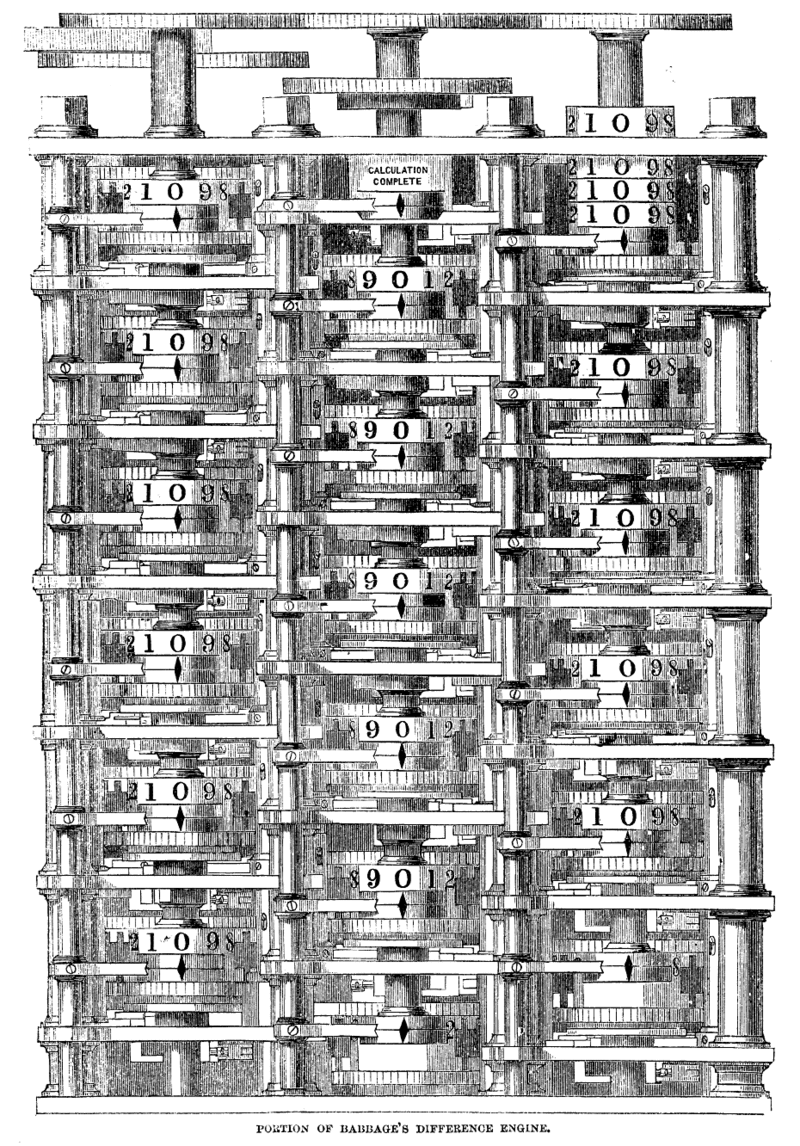Event JSON
{
"id": "274f855e584536d7b8014b1fbf285a90b01f248925c3a12678df0953d2863d12",
"pubkey": "894dfb8e81fbea70ef2ce2a2cc306069ff39e80b2881775df3dbe035359080c2",
"created_at": 1718355091,
"kind": 1,
"tags": [
[
"imeta",
"url https://files.mastodon.social/media_attachments/files/112/614/097/536/910/196/original/a9e204f710ddfd43.gif",
"m image/gif"
],
[
"t",
"otd"
],
[
"proxy",
"https://mastodon.social/@gutenberg_org/112614119302647223",
"web"
],
[
"t",
"books"
],
[
"proxy",
"https://mastodon.social/users/gutenberg_org/statuses/112614119302647223",
"activitypub"
],
[
"L",
"pink.momostr"
],
[
"l",
"pink.momostr.activitypub:https://mastodon.social/users/gutenberg_org/statuses/112614119302647223",
"pink.momostr"
]
],
"content": "#OTD in 1822.\n\nCharles Babbage proposes a difference engine in a paper to the Royal Astronomical Society.\n\nThe difference engine is based on the method of divided differences, a way to interpolate or tabulate functions by using a small set of polynomial co-efficients. Some of the most common mathematical functions are built from logarithmic \u0026 trigonometric functions, which can be approximated by polynomials, so a difference engine can compute many useful tables.\n\nhttps://www.gutenberg.org/ebooks/71292\n\n#books\nhttps://files.mastodon.social/media_attachments/files/112/614/097/536/910/196/original/a9e204f710ddfd43.gif\n",
"sig": "e32070c405a167737ad312ac7d7a48ef39df2384976e8e20bd1b1b7d8a9f9a0b5b1f129078aed97fe4bd475195e0e63b229e6eff05a4c04756349a5ec0be3756"
}
